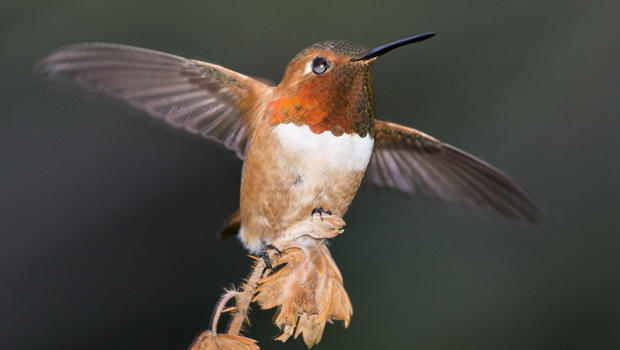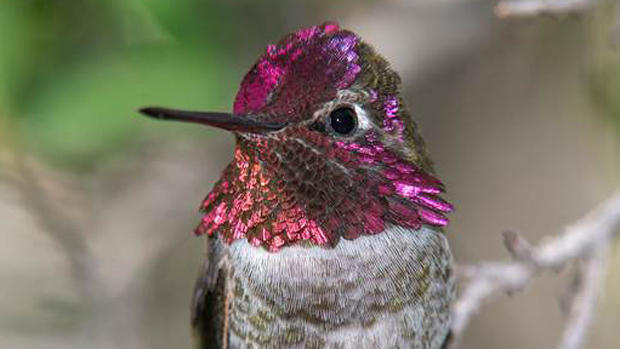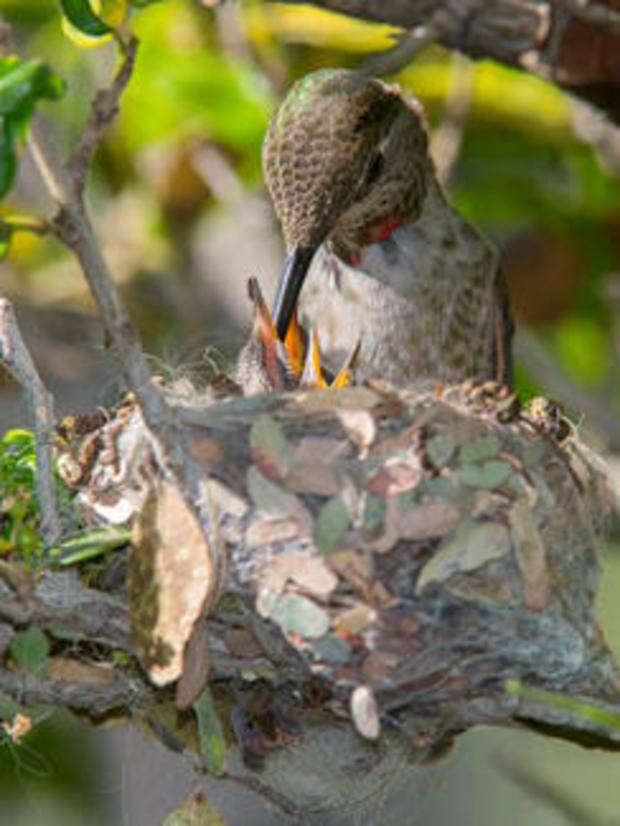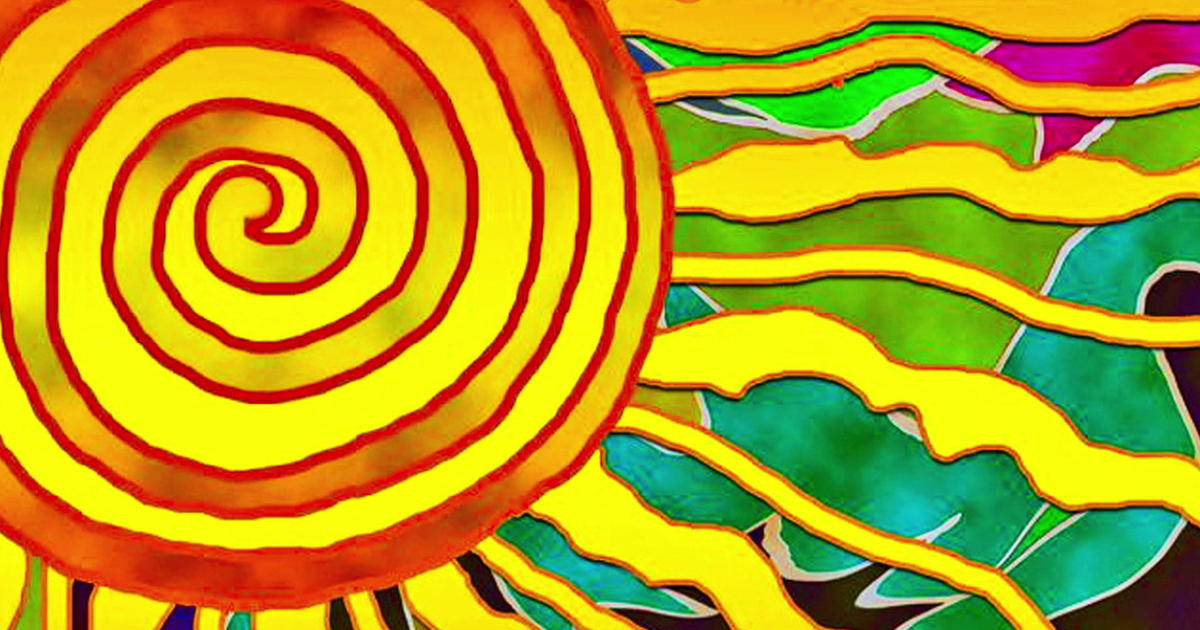Nature up close: Hummingbirds
By "Sunday Morning" contributing videographer Judy Lehmberg.
The eastern half of the U.S. has one species of hummingbird, the ruby-throated. Meanwhile, the Sonoran in southern Arizona, with its combination of mountains, creeks and one of the richest deserts on Earth, is a magnet for at least 12 species of hummingbirds.
Put up a feeder in the spring and soon the air will be filled with hummers, fighting for their spot. Watch closely and you will be transfixed by just how aggressive they are. If they weighed five pounds, instead of a fraction of an ounce, you might be scared to death.
Because hummingbirds are small, they have an almost unbelievably, high metabolic rate, roughly 77 times that of a human, who would have to eat at least 155,000 calories a day just to survive if he had the same metabolic rate. Diet time?
Along that same vein, hummingbirds are attracted to red. The red-colored hummingbird food, sold in stores, contains red dye which can severely damage the kidneys of a tiny bird with a high metabolic rate. If you would like to feed hummers, do them a big favor: Mix roughly four parts water and one part sugar, fill a clean feeder with the mixture, and enjoy. I've thought about adding protein powder, but haven't, because I'm not sure it is necessary. Hummingbirds eat more insects than you might think for proteins.
Many red flowers are tube-shaped, allowing hummingbirds to reach the nectar but excluding other nectar-lovers, such as bees.
This relationship between a hummingbird and its flower evolved over literally, millions of years.
The ecological niche of any animal is its job description; where it lives and its relationships with other species, predator, prey, plant, animal. For many plants, their only pollinators are nectar-feeding birds.
Along with honeycreepers in Australia and sunbirds in Africa, hummingbirds are essential for the survival of many plant species.
Hummingbirds are one of the few bird families that may benefit from man's presence. As our population increases, more land is used for housing. Mindful homeowners plant species beneficial to migrating hummingbirds, and butterflies.
See also:
The Cornell Lab of Ornithology, Cornell University
Bird cams (Cornell Lab of Ornithology)
Bird songs & calls (Cornell Lab of Ornithology)
Judy Lehmberg is a former college biology teacher who now shoots nature videos.
For more info:
- Judy Lehmberg (Official site)
- Judy Lehmberg's YouTube Channel
To watch extended "Sunday Morning" Nature videos click here!









